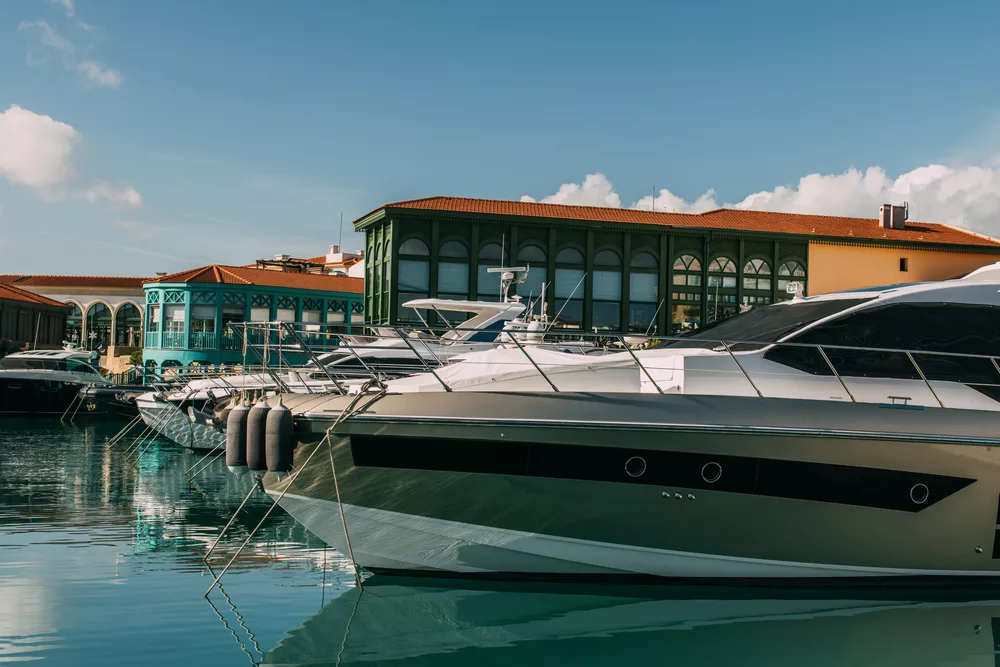So you want to be a boat or yacht owner? That’s great! You will find that when you get behind the helm, a whole new world of opportunity and fun opens up to you. Yet, before you cast off and begin your voyage, you will need to make the purchase. Since boats can be a tremendously expensive investment, you may be considering a boat loan to make the process more affordable and flexible. That said, securing a boat loan can be challenging, especially if you are unaware of how everything works.
In preparation of your upcoming boat purchase, let’s discuss the dos and don’ts of boat loans.
How Do Boat Loans Work?
Boat loans work in a similar way to other types of loans, such as car loans or personal loans, though boat loans tend to have a longer repayment period.
Typically, your boat loan is going to have a period of 7 to 20 years, though you may get a shorter or longer period depending on several factors such as your credit score, the age of the boat, and the cost of the watercraft. If you want to purchase an expensive yacht, you will often receive a longer loan term to make the monthly payments more affordable. For example, if the yacht is $30 million, you could receive a 20-year loan term (or longer). Conversely, a $500,000 cabin cruiser may only get a 5-10 year loan term.
Once you have compared various lenders and their loans, you need to submit an application to the lender. Applications ask you to provide your income, credit score, employment, and the kind of boat you would like to purchase.
The lender then reviews the application and determines whether you are worthy. If you are approved, they provide you with an offer that includes the loan amount, repayment terms, and interest rate. Keep in mind that shorter loans have lower interest rates, while those that are longer tend to have higher interest.
I think the first paragraph pretty much states this, so let’s cut to try and get the word count down.
Additionally, in most cases, boat loans are secured by the boat itself, meaning that the lender can repossess the boat if you default on the loan. This is similar to how car loans work, where the car itself serves as collateral for the loan.
Overview of Different Kinds of Boat Loans
By understanding the different types of boat loans out there, you can better prepare for the terms of the loan as well as get the one that best suits your needs and budget. Here is an overview of the various boat loans available:
Secured Boat Loans
A secured boat loan is “secured” with collateral that is the boat itself. In other words, the lender holds the title of the boat until you have paid in full. Secured boat loans typically have lower interest rates than unsecured loans, but you may be required to also pay a down payment alongside collateral.
Unsecured Boat Loans
If you do not want to use your boat as collateral, an unsecured boat loan may interest you. With this loan, the lender does not hold the title to the boat. Unsecured boat loans typically have higher interest rates than secured loans.
Fixed-Rated Boat Loans
These loans have a fixed interest rate for the entire loan term, meaning that the borrower’s monthly payment remains the same. Fixed-rate boat loans provide stability and predictability for borrowers. Keep in mind that you can always pay more than your fixed monthly payment. This could help you pay off the loan faster and save you some money in the long run. However, there may be penalties for early or additional payments, so be sure to read the fine print of the boat loan.
Balloon Payment Boat Loans
These loans have a lower monthly payment for the majority of the loan term, but a larger “balloon payment” at the end of the term. Balloon payment loans can be a good option for borrowers who want a lower monthly payment initially, but they can also be more risky if the borrower is unable to make the balloon payment at the end of the term.
Variable-Rate Boat Loans
These loans have an interest rate that can fluctuate over time, depending on market conditions. Variable-rate boat loans can provide lower interest rates initially, but they can also be more risky if interest rates rise significantly. If you have the financial flexibility to make payments that rise and fall, this could be a good option, especially since you could end up paying off your loan much faster than predicted. The disadvantage here is that payments could skyrocket unpredictably, leaving you overwhelmed.
What to Do When Getting a Boat Loan
You found a boat and are excited to sail off into the sunset. Before you can do that, you need to gather up information and required documentation for your boat loan application. Here is a list of things to do when applying for a boat loan:
Do check your credit score. Your credit score is a key factor that lenders use to determine whether to approve your loan application and what interest rate to offer you. Check your credit score before applying for a boat loan and take steps to improve it if necessary. You should also know whether you have late or missing payments, as this could affect the outcome of your application.
Confusing. The boat gets its own loan? I’ve never met a sentient boat.
Do calculate your budget. You do not want to overextend yourself financially. Determine how much you can afford to spend on a boat and what monthly payment you can comfortably make. Remember, you also have to account for maintenance, the marina, and other costs related to boat ownership.
Do consider a down payment. Most lenders will require a certain percentage for your down payment. Making a larger down payment could potentially lower your monthly payments and also reduce the overall cost of the boat.
Do shop around. There are many lenders that offer boat loans, including banks, credit unions, dealerships, and online lenders. Shop around to find the best rates and loan terms, and compare loan offers from multiple lenders before settling on the one that is right for you.
Do ask questions—that’s a must. If something within the loan offer does not make sense, make sure you ask your lender. You should fully understand the loan terms, interest rate, associated fees or charges, and repayment period.
By doing these things, you can increase your chances of getting approved for a boat loan with favorable terms and avoid any financial pitfalls.
What Not to Do When Getting a Boat Loan
Now, what about the don’ts of applying for a boat loan? Here are some things you should avoid doing when trying to get a boat loan:
Don’t overestimate your budget or finances. Biting off more than you chew when it comes to monthly payments can take the wind out of your sails very quickly. Be realistic about what you can afford that won’t overextend yourself financially. Avoid the temptation to take out a loan that is larger than you can comfortably afford to pay back.
Don’t alter anything important, including your debt-to-income ratio. You do not want to change anything that could affect your debt-to-income ratio, including your credit history or employment. For example, if you have been an executive in technology for seven years but want to switch to another industry or take a pay cut to pursue a hobby, don’t—not until you have secured a boat loan. Most lenders want to see at least 2 years of work history for the same employer. Also, avoid over-spending and late payments.
Don’t apply for multiple boat loans at once. Applying for multiple boat loans at the same time can hurt your credit score and make it more difficult to get approved for a loan. Stick to applying for loans from one or two lenders at a time.
Don’t overlook the necessity of maintenance and upkeep on your boat. Although this may not seem like something you need to think about until you get your boat, you should ensure you have a place in your budget to keep your boat in good working condition. Otherwise, you may find yourself too financially stressed to enjoy your new purchase.
By avoiding these common mistakes, you can increase your chances of getting approved for a boat loan with favorable terms and avoid any financial pitfalls.







